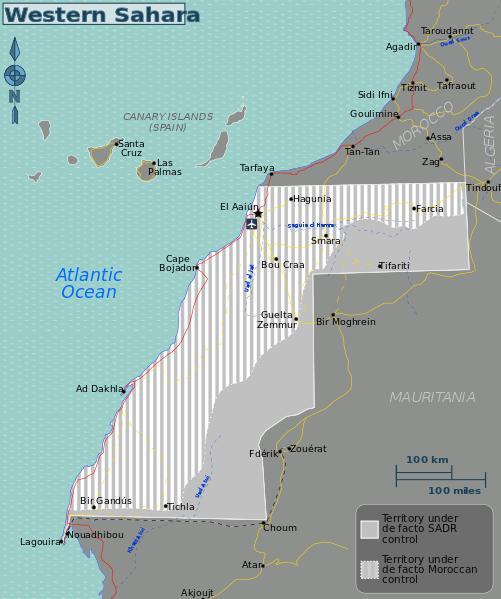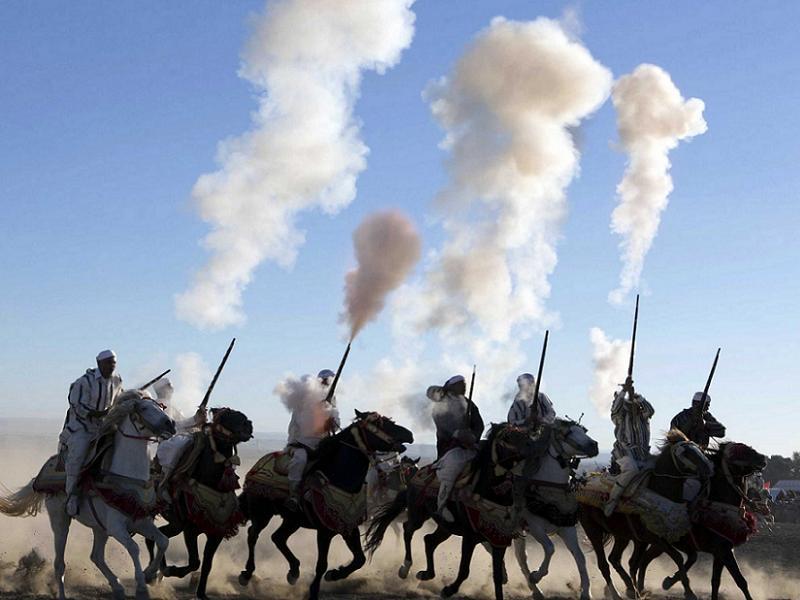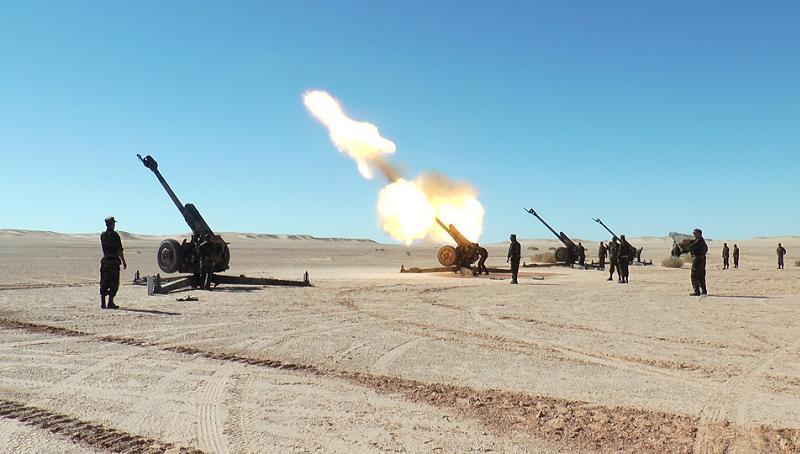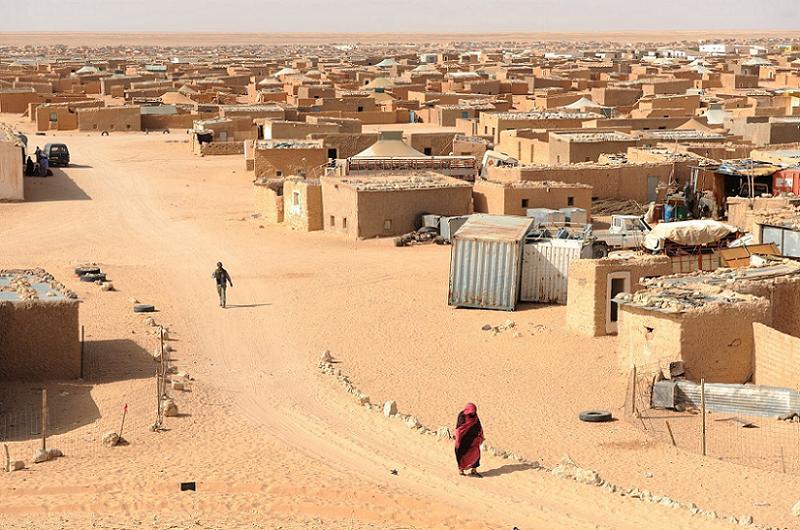
Source: Theatrum Belli
Deep in the Sahara Desert lies the Sahrawi Arab Democratic Republic (SADR). This somewhat grandiose title refers to the political organization of either 100,000 or 500,000 Sahrawi people, depending on who is doing the counting, who were driven from their homes in what used to be the Spanish Sahara in 1975, and who have spent the last 40 years living as refugees in a forgotten corner of Algeria.
The SADR is led by a political/military/terrorist/freedom fighter organization known as the Polisario Front, which is ironic because Polisario helped create the mess that nearly three generations of Sahrawis have had to live with. We explore these placeless people in the gallery below:

The story of the Sahrawi Arab Democratic Republic begins with the founding of the Polisario Front in 1973. This was an absolutely bog-standard Third World resistance movement, like East Timor's Fretilin or Colombia's FARC, and its stated purpose was to evict what remained of the Spanish colonial empire, found a socialist state, and make the desert bloom. All that stood in the way of turning Spanish Sahara into a desert paradise was Polisario's almost total lack of money, guns, international recognition, and members. Also, the movement smacked of Western Saharan nationalism, which alarmed the area's neighbors, Morocco and Mauritania. Source: Wikimedia Commons
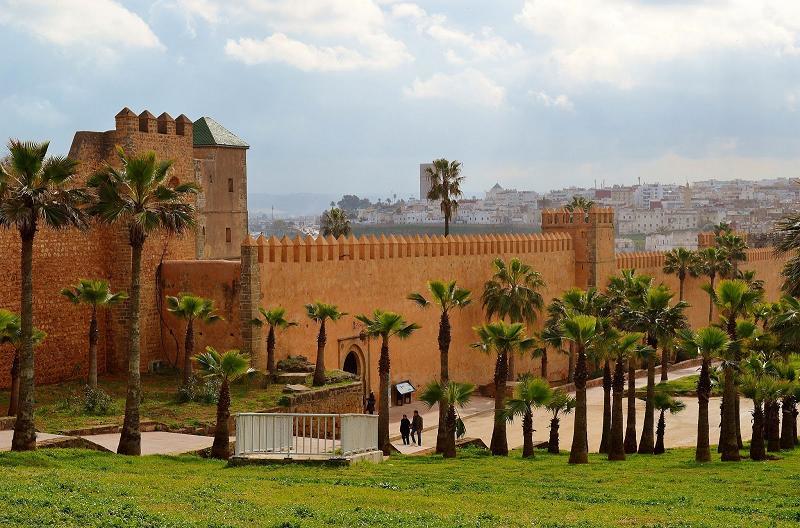
Ordinarily, pissing off Morocco and Mauritania isn't the kind of thing other countries worry about, but Polisario was squeezed between them, with the Atlantic coast and the howling desert on either side, and they didn't have close to the resources to resist if either country decided to force the issue. In 1975, just as the over-9,000-year-old Spanish dictator Francisco Franco lay dying, Morocco forced the issue. Source: Green Caviar Travel Blog

In 1975, King Hassan II of Morocco appealed to the International Court of Justice in the Hague for a decision on how the decrepit Spanish holdings were to be carved up. Hassan argued that Western Sahara was, like, totally Moroccan, and that he would abide by the judgment of the Court. In October of that year, days after the Court ruled that the Sahrawi people owned the land and that they must approve of any land deals by popular vote, Morocco signaled its compliance by invading the land and driving out the Spanish, who seemed frankly relieved to be out of there once and for all. Source: Huffington Post Maghreb
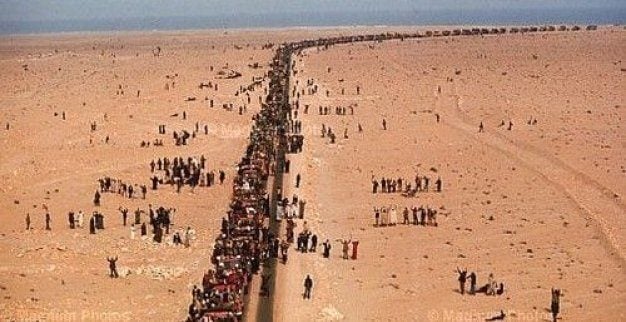
This wasn't a typical invasion. In a subtle demonstration of what King Hassan thought of the Moroccan army's competence, the Green March, as it became known, consisted entirely of civilians; 350,000 of them. Basically, the Moroccan government marched a significant fraction of its population across the border, totally unarmed, and dared the Spanish garrison to open fire. Spanish soldiers from 300 years earlier wouldn't have hesitated, but in 1975 times had changed. Instead of killing everybody, the Spanish dismantled a minefield and left. Source: Morocco World News

This left Polisario in a rough spot. The Spanish garrison had been a pushover, but the Moroccan authorities were dead serious about holding onto Western Sahara. Tens of thousands of Sahrawi civilians were driven out into the desert, starting early in 1976. Source: Wikipedia

One of the most remarkable things about the Western Sahara conflict is how few people cared to notice. During the Cold War, Washington and Moscow took turns arming every 12-man insurgency on Earth with enough weapons to keep everybody nice and tense in faraway places like Laos and Peru. Western Sahara is so far away from trade routes and oil deposits that even hysterically paranoid enemies like the US and the USSR gave this one a pass. Officially, the US favored Morocco, but didn't make a big deal out of it. As for the Soviet Union, they were okay with passive support for their "comrades" in Polisario, but actual aid only came from Algeria and Libya. Source: History
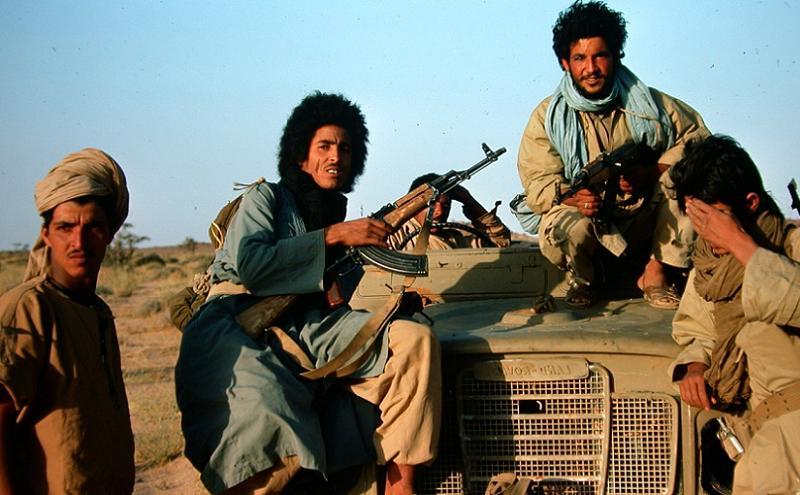
One consequence of this global indifference is that, unlike every other armed group in the world at the time, Polisario didn't have any modern weapons or regular supplies. Most of the group's weapons were whatever they could scavenge off of dead Moroccans or import from the few countries that bothered with them. Source: All Africa

Despite Polisario's massive disadvantage in materiel, they still managed to slaughter the Moroccan army almost every time. It was Polisario troops who pioneered the use of technicals, usually Toyotas with machine guns welded onto the beds, to stage massive hit-and-run attacks against Moroccan outposts. They hit Mauritania hard enough to make them withdraw from the country. Source: Flickr
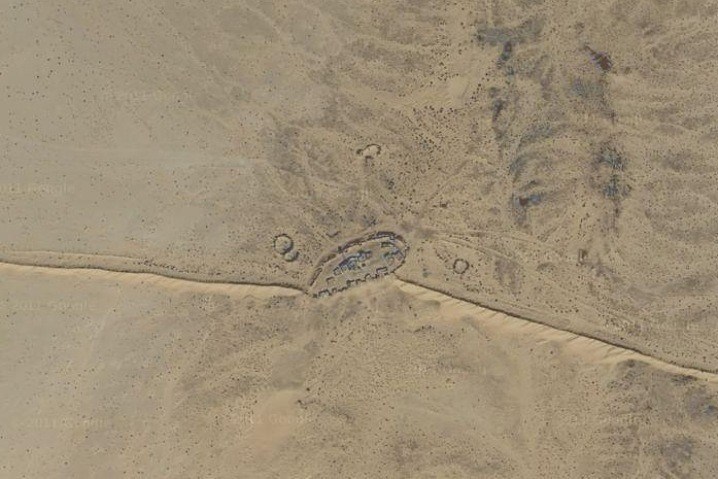
Morocco took a different approach: a pile of sand. Like many Third World armed forces, the Moroccan army has always been a lot better at chasing unarmed villagers through the night than at facing an enemy who is looking for a fight. After the nth totally successful Polisario raid deep into Moroccan territory, King Hassan ordered a giant sand berm to be piled up along the disputed border. This actually worked, somewhat, and a cease-fire has been in effect since 1991. Source: PBS

Manned by soldiers, the "wall" stands about 10 feet high, 6 to 7 feet thick, and runs hundreds of miles through the desert along the disputed zone. Source: Tindouf Express
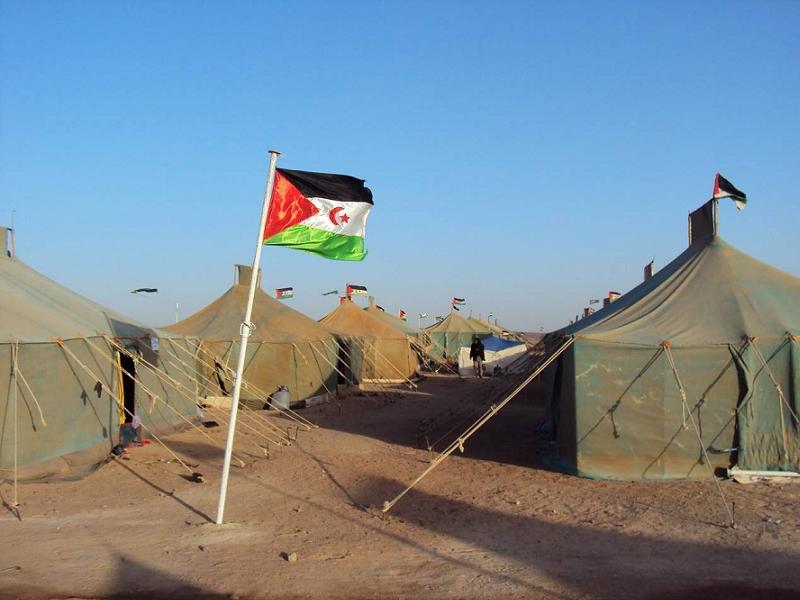
The cease-fire has been in place for nearly 25 years, mainly because Algeria wants it to be, and it has left the Sahrawi people in stateless limbo. The scattered constellation of camps, which were never intended to be more than a temporary solution, are the only home two generations of Sahrawi have ever known. Source: Gaceta De Marruecos

International recognition of SADR has been sporadic and unpredictable. As of 2015, 84 countries, such as Mexico, Iran, and South Africa, recognize the Sahrawi Republic, as do quite a few other largely stateless entities, such as South Ossetia. Other countries, such as Mauritius and New Guinea, once recognized SADR, but have withdrawn their support. Despite endorsements from South Sudan, Uruguay, and North Korea, Algeria remains practically the only source of material aid for the Sahrawi. Source: Blogspot
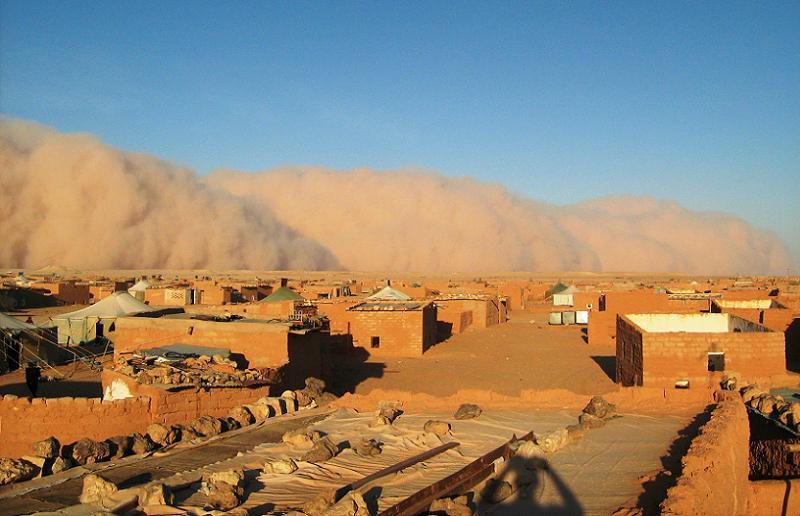
A view of the Tindouf Province, which has a population of approximately 58,000 people, not including the Sahrawi at refugee camps. Source: Morocco On The Move
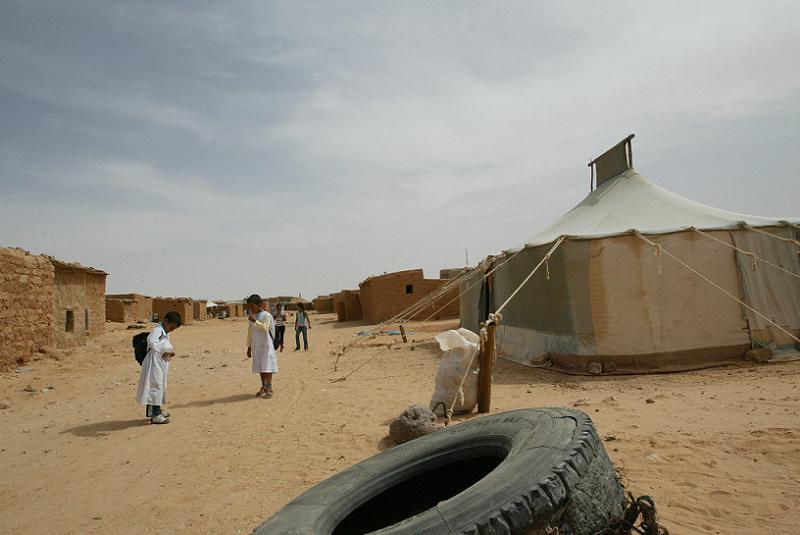
The next time your kids complain about having to mow the lawn, don't say a word; just show them this. Source: Human Rights Watch

There isn't much to do in the refugee camps except X-treme kick the can. Actually, these canisters are gas rations provided by the UN, and they're about the only source of fuel available. Imagine if your ability to cook for your family hinged on regular deliveries from the United Nations. Source: Blogspot

The idea always was that the United Nations would oversee an election that would restore the Sahrawi to sovereignty over their country. That election keeps not happening. This is a picture of the UN Security Council. Guess which country has a seat on it. Hint: it's close to the action and rhymes with "chicken taco." Source: Blogspot

A man sits hillside, overlooking the settlement. Source: BLED

This is Smarra, the largest Sahrawi camp, and you would sell your watch to get out of it. Source: Institute Of The Black World
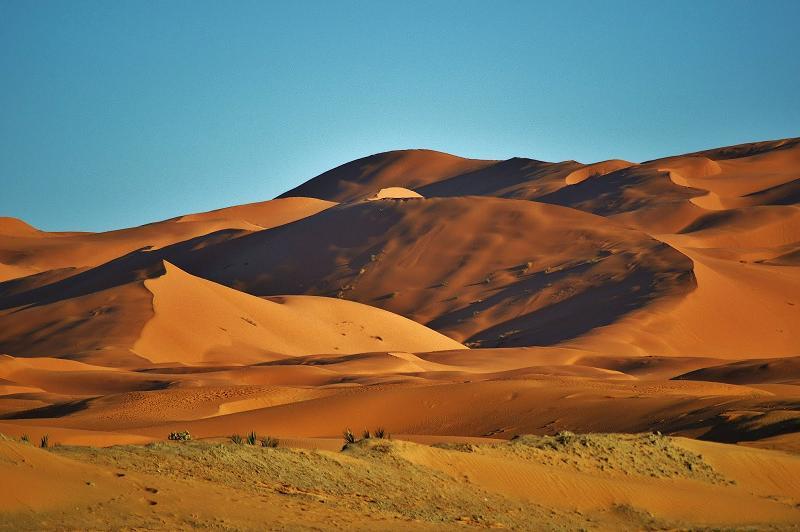
It isn't everyplace where going for a walk outside of town can end with a three-day search and death from dehydration. Source: Green Caviar Travel Blog
